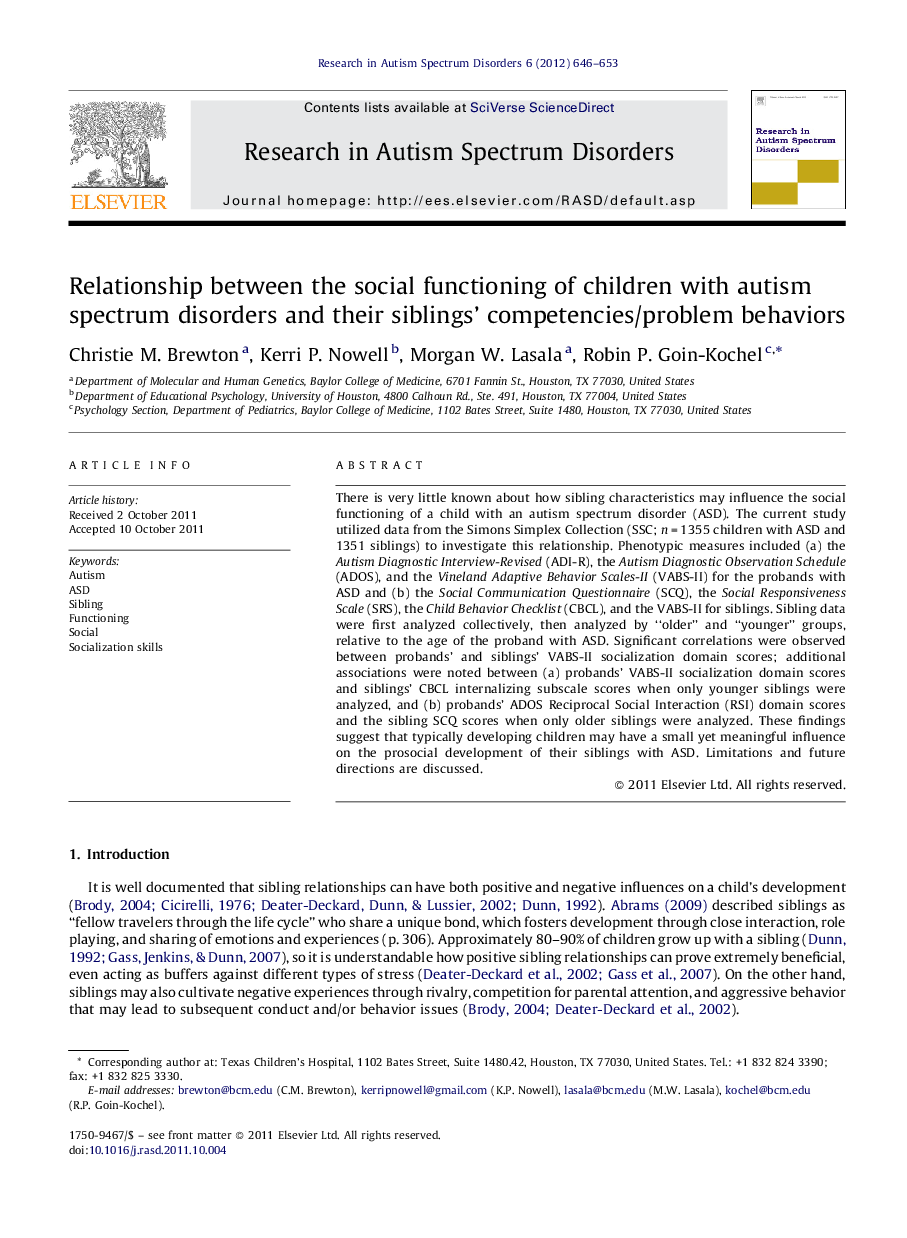| Article ID | Journal | Published Year | Pages | File Type |
|---|---|---|---|---|
| 370683 | Research in Autism Spectrum Disorders | 2012 | 8 Pages |
There is very little known about how sibling characteristics may influence the social functioning of a child with an autism spectrum disorder (ASD). The current study utilized data from the Simons Simplex Collection (SSC; n = 1355 children with ASD and 1351 siblings) to investigate this relationship. Phenotypic measures included (a) the Autism Diagnostic Interview-Revised (ADI-R), the Autism Diagnostic Observation Schedule (ADOS), and the Vineland Adaptive Behavior Scales-II (VABS-II) for the probands with ASD and (b) the Social Communication Questionnaire (SCQ), the Social Responsiveness Scale (SRS), the Child Behavior Checklist (CBCL), and the VABS-II for siblings. Sibling data were first analyzed collectively, then analyzed by “older” and “younger” groups, relative to the age of the proband with ASD. Significant correlations were observed between probands’ and siblings’ VABS-II socialization domain scores; additional associations were noted between (a) probands’ VABS-II socialization domain scores and siblings’ CBCL internalizing subscale scores when only younger siblings were analyzed, and (b) probands’ ADOS Reciprocal Social Interaction (RSI) domain scores and the sibling SCQ scores when only older siblings were analyzed. These findings suggest that typically developing children may have a small yet meaningful influence on the prosocial development of their siblings with ASD. Limitations and future directions are discussed.
► Looked at functioning of children with autism and their siblings’ problem behaviors. ► Sibling group separated in to younger and older in relation to children with autism. ► We conclude that younger sibling group has more of an impact than older. ► Further research needed to explore other factors that may impact social functioning.
